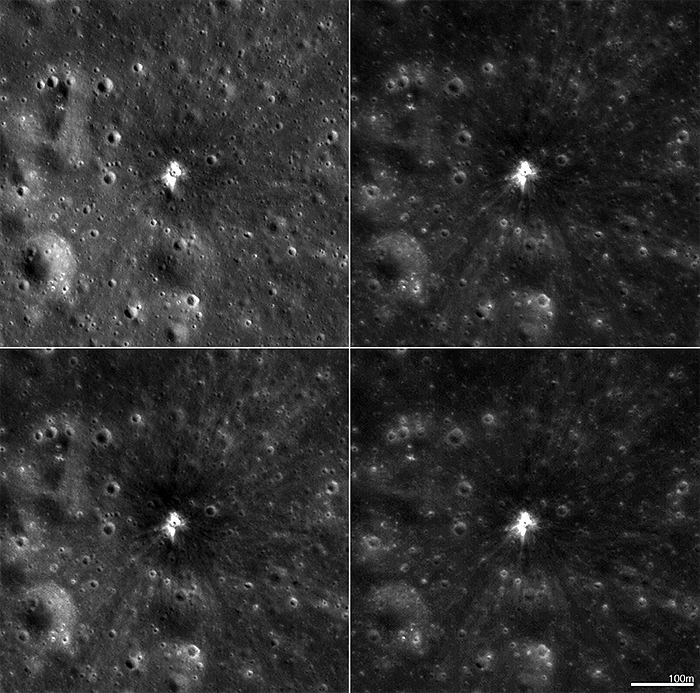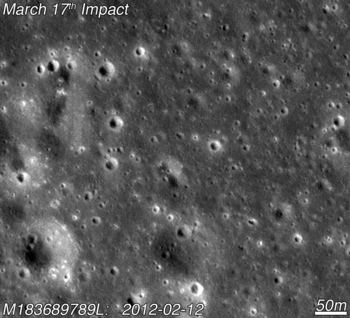.
A NEW CRATER ON THE MOON: Most craters on the Moon were formed millions or even billions of years ago. NASA's Lunar Reconnaissance Orbiter just found one, however, that is only 9 months old. On March 17, 2013, a bright flash of light emerged from Mare Imbrium, the Sea of Rains. Researchers concluded that a small asteroid about 0.4 meters wide hit the lunar surface and exploded like 1.3 tons of TNT.
Lunar Reconnaissance Orbiter's LROC camera photographed the crater in July when the spacecraft made a routine pass over the impact site. Subsequent analyses presented at last week's American Geophysical Union meeting linked the crater to the March 17th impact. According to the LROC photo, the crater is 18 meters (59 feet) wide. Together with the bright rays of fresh ejecta ringing the central gouge, the entire impact mark spans an area of lunar terrain half the size of an American football field.
Unlike Earth, which has an atmosphere to protect it, the airless Moon is baldly exposed to incoming asteroids. NASA's Meteoroid Environment Office monitors the lunar surface for signs of ongoing impacts. Since 2005 they have detected flashes of light from more than 300 explosions. The March 17th event was the brightest they'd ever seen, 10 times more luminous than any other lunar meteor in the history of the program. LROC's detection of a crater in Mare Imbrium provides the kind of "ground truth" measurement they need to calibrate the entire dataset.
.

Four different NAC images of crater (18 meter diameter) formed on the Moon, 17 March 2013, each scene is 560 meters wide, north is up [NASA/GSFC/Arizona State University].
.
The NASA Lunar Impact Monitoring Program monitors the Moon from a dedicated telescope facility at Marshal Space Flight Center for Meteoroid Impacts. Since 2005 the Marshall group recorded over 300 flashes(assumed to be meteoroid impacts), their brightest recorded flash occurred on 17 March 2013 with coordinates 20.6°N, 336.1°E. Since then LRO passed over the flash site and the NAC imaged the surrounding area; a new 18 meter (59 feet) diameter crater was found by comparing images taken before and after the March date.
.

LROC NAC before and after images of Marshall 17 March impact event. The newly formed crater is 18 meters (59 feet) in diameter [NASA/GSFC/Arizona State University].
.
This is not the first new impact crater the LROC team has found, nor will it be the last! Hundreds of changes to the surface appear in NAC temporal pairs, the LROC team is systematically searching this growing set of before/after images and results were presented at the American Geophysical Union Fall Meeting last week, and more is coming in the near future.
Revisit a previous LROC post showing new craters on the Moon formed by natural processes. Also note that new craters on the Moon were also formed by spacecraft impacts (Ranger, Apollo SIV-B, GRAIL), see a summary of LROC Featured Images on this topic.
Quelle: NASA
5375 Views

